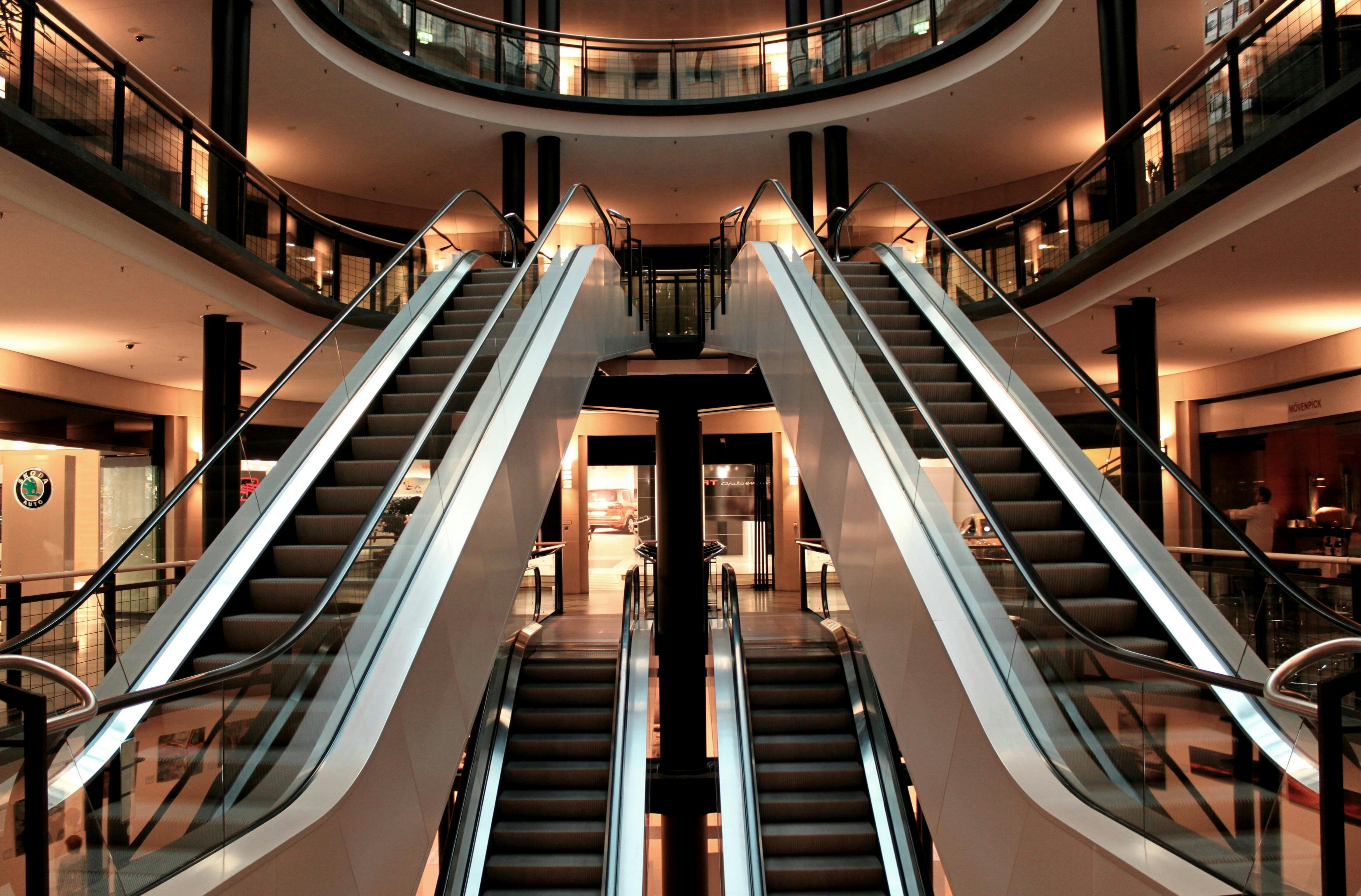Ready to turn insight into action?
We help organisations transform ideas into measurable results with strategies that work in the real world. Let’s talk about how we can solve your most complex supply chain challenges.

Interviewer: Today, we're speaking with Shanaka Jayasinghe, an expert in designing and optimising 'back of house' infrastructure for food & beverage and hospitality venues. Shanaka, with the Olympics around the corner and major events & destination venues in mind, can you share insights into the importance of safe, scalable, and efficient infrastructure?
Shanaka Jayasinghe: Absolutely. The 'back of house' is the engine room for any major F&B or hospitality venue, especially those of larger scale, for example Integrated Resort Venues and Major Sporting Precincts. Efficient design is critical not only for the success of the event but also for the safety and experience of staff and guests, and the long-term legacy for the community.
The Importance of 'Back of House' Infrastructure
Interviewer: What makes the 'back of house' infrastructure so crucial for major F&B and hospitality destinations?
Shanaka Jayasinghe: 'Back of house' areas like loading docks, kitchens, and waste management systems are vital for the smooth operation of any large venue. They must be designed to handle high volumes of goods and people, ensuring that everything from food delivery to waste disposal happens seamlessly. Safety, scalability, and efficiency are key. The infrastructure must protect staff and guests, adapt to fluctuating demands, and operate with minimal waste and maximum productivity.
Designing for Safety, Scalability, and Efficiency
Interviewer: How can venues ensure their 'back of house' infrastructure is safe, scalable, and efficient?
Shanaka Jayasinghe: It starts with thoughtful design:
- Safety: This includes everything from ensuring proper ventilation in kitchens to designing traffic flows that prevent accidents between vehicles and pedestrians. Compliance with health and safety regulations is a minimum standard, but truly effective designs anticipate and mitigate risks before they arise.
- Scalability: Venues must accommodate both everyday operations and peak demands during major events. This might involve modular spaces, flexible equipment, or staffing plans that can expand and contract as needed.
- Efficiency: Efficient 'back of house' designs reduce operating costs and improve service. This involves optimizing layouts for smooth flows of goods and people, investing in high-quality equipment that speeds up production and reduces energy use, and implementing systems that reduce waste.
Stages in Planning for Major Events
Interviewer: What are the different stages in planning 'back of house' infrastructure for a major event like the Olympics?
Shanaka Jayasinghe: Planning for such events typically involves several stages:
- Conceptual Design: This is where the vision for the venue is created, considering the unique requirements of the event, the expected number of guests, and the types of services to be provided.
- Detailed Design and Development: Once the concept is approved, detailed plans are drawn up. This stage involves close collaboration with architects, engineers, chefs, and other stakeholders to ensure every aspect of the 'back of house' is optimally designed.
- Construction and Fit-Out: This stage turns the plans into reality. It's crucial to maintain quality control and stay on schedule and budget.
- Operational Planning and Training: Before the venue opens, staff need to be recruited, trained, and familiarized with the facilities. Operational plans for everything from supply chain logistics to emergency responses must be tested and refined.
- Event Execution and Review: During the event, the 'back of house' must operate like clockwork. Afterward, a thorough review can capture learnings for future events.
The Pivotal Role of Procurement in Planning Major Events
In planning for major events, the role of procurement is both critical and multifaceted. It involves not just acquiring goods and services but also strategically managing relationships and resources to ensure that every aspect of the event is delivered on time, within budget, and to the highest standards. Here’s how procurement plays a key role across different stages:
- Identifying Needs and Sourcing Suppliers: Early in the planning process, procurement teams work closely with all stakeholders to identify the precise needs of the event, from construction materials for temporary structures to food and beverages for hospitality services. They then source suppliers who can meet these needs, considering factors such as cost, quality, capacity, reliability, and sustainability.
- Assessing and Partnering with Suppliers: Once potential suppliers are identified, the procurement team assesses them based on various criteria, including past performance, financial stability, and compliance with relevant laws and regulations. They look for partners who not only provide the necessary goods and services but can also adapt to the dynamic nature of event planning, often under tight timelines.
- Contracting and Managing Supplier Relationships: Procurement is responsible for negotiating contracts that protect the interests of the event while ensuring fair terms for suppliers. This includes clear specifications, delivery schedules, and performance criteria. Throughout the event planning and execution, procurement maintains close communication with suppliers, managing orders, handling logistics, and resolving any issues that arise.
- Operational Procurement for 'Business as Usual' (BAU): Beyond the unique demands of the event itself, procurement ensures the ongoing supply of regular goods and services needed for the 'back of house' operations. This includes everything from routine maintenance supplies to daily food deliveries, ensuring that the event's infrastructure and services run smoothly throughout.
Effective procurement is about more than just buying; it's about strategically sourcing and managing resources to deliver a successful event. From the initial planning stages to the final breakdown, procurement teams are integral in ensuring that every element comes together seamlessly, contributing to the overall success and sustainability of the event.
Impact of Proper Design on Experience and Legacy
Interviewer: How does proper 'back of house' design impact the overall experience and leave a sustainable, lasting positive change for communities?
Shanaka Jayasinghe: A well-designed 'back of house' ensures that guests enjoy seamless service, enhancing their overall experience. For staff, it creates a safe and pleasant working environment. But the impact goes beyond the event itself. Sustainable designs can reduce the environmental footprint of venues, promote local employment, and leave behind facilities that benefit the community for years to come. For instance, a modular kitchen used during an event can be repurposed for community use afterward, or waste management systems can set new standards for environmental responsibility in the area.
The Role of Consultancy in Designing Back of House Infrastructure
Interviewer: How can consultants like you assist in this complex process?
Shanaka Jayasinghe: Consultants bring a wealth of experience and a fresh perspective. We can guide venues through each stage of the process, from initial concept to post-event review. Our role often involves benchmarking against best practices, advising on the latest technologies and methods, and helping to coordinate the many stakeholders involved in such projects. Ultimately, we're here to ensure that the 'back of house' infrastructure meets the highest standards of safety, scalability, and efficiency.
Interviewer: Thank you, Shanaka, for sharing your valuable insights on designing effective 'back of house' infrastructure for major F&B and hospitality destinations. Your expertise offers a clear guide for businesses looking to excel in hosting major events.
Shanaka Jayasinghe: It's been a pleasure. Remember, the 'back of house' may be behind the scenes, but it's central to the success of any major event or destination. Proper planning and design are key to delivering a safe, enjoyable, and sustainable experience.

The Importance of 'Back of House' Infrastructure: The Risks of Poor Design
When delving into the 'back of house' infrastructure, the stakes of design and execution are incredibly high. Poorly designed back-of-house areas can have cascading effects on the entire operation of major F&B and hospitality venues, particularly during large-scale events. Let's break down the potential pitfalls of inadequate back-of-house infrastructure:
Unsafe Working Environments
Inefficiently designed spaces can lead to overcrowded, chaotic, and unsafe working conditions. Poorly planned traffic flows might lead to accidents between staff or between staff and vehicles, especially in high-paced environments. Insufficient ventilation in areas like kitchens can lead to health risks, while inadequate waste disposal systems can create hazardous conditions.
Traffic Congestion and Parking Issues
Loading docks are the lifeblood of any large venue, facilitating the smooth flow of goods in and out. However, if these areas are not strategically planned, they can become bottlenecks, causing traffic congestion not only within the venue but also on surrounding roads. Similarly, poorly designed guest car parks can lead to frustrating delays for attendees, negatively impacting their overall experience and potentially causing safety issues.
High Cost to Serve
A poorly designed back of house significantly increases the cost to serve. Inefficiencies in the layout can lead to longer distances for moving goods from the loading dock to storage areas or kitchens, increasing labor and equipment costs. If waste management systems are not optimally designed, the costs and complexities of disposal can escalate quickly.
Increased COGs and Labour Costs
Suboptimal back-of-house design can lead to higher costs of goods sold and labor. For instance, inefficient kitchen designs might require more staff to perform the same amount of work, or lead to higher wastage of ingredients. Poorly organized storage areas can result in damaged goods or increased time spent locating items, both of which can significantly drive up costs.
Compromised F&B Experience
The ultimate goal of any F&B and hospitality venue is to provide an exceptional experience to guests. However, if the back of house is poorly designed, it can lead to delays in service, errors in order fulfillment, and a general decrease in the quality of food and beverages. This not only impacts the venue's reputation but can also lead to reduced patronage and revenue.
In summary, the 'back of house' infrastructure is a critical component that, if not properly designed, can lead to unsafe working conditions, operational inefficiencies, increased costs, and a diminished guest experience. It's a foundational element that requires careful, strategic planning and execution to ensure the success and sustainability of any major F&B and hospitality operation.
Ready to turn insight into action?
We help organisations transform ideas into measurable results with strategies that work in the real world. Let’s talk about how we can solve your most complex supply chain challenges.


.jpg)







